Tasmanian Mushrooms
Tasmanian Mushrooms represent a captivating and diverse array of fungi found in the lush and temperate rainforests of Tasmania, Australia. This region’s unique climate, characterized by cool temperatures, high rainfall, and rich biodiversity, creates an ideal environment for a wide variety of mushroom species. From edible and medicinal varieties to those with psychoactive properties, the exploration of Tasmanian Mushrooms offers insights into the ecological significance of fungi, their culinary applications, and their potential health benefits.Tasmanian Mushrooms
Key Features:
-
Diversity of Species: Tasmania is home to numerous mushroom species, including both well-known edible varieties and lesser-known wild fungi. Some of the most notable include the Tasmanian Truffle (Tuber aestivum), which is highly prized for its culinary value, and various species of wild mushrooms such as chanterelles, porcini, morels, and the unique Tasmanian Blue Mushroom (Entoloma hochstetteri). The diversity of species makes Tasmania a hotspot for mushroom foraging and research, attracting mycologists and culinary enthusiasts alike. The region’s varied ecosystems, from coastal areas to alpine regions, contribute to the rich tapestry of fungi found throughout the island.Tasmanian Mushrooms
-
Culinary Applications: Tasmanian Mushrooms are celebrated for their rich flavors and unique textures, making them a favorite among chefs and food enthusiasts. They can be used in a variety of dishes, from gourmet sauces and risottos to simple sautéed preparations. The Tasmanian Truffle, in particular, is sought after for its aromatic qualities and is often used to elevate fine dining experiences. Local chefs frequently incorporate these mushrooms into seasonal menus, showcasing their versatility and enhancing the culinary landscape of Tasmania. The use of wild mushrooms in traditional dishes also reflects the cultural heritage of the region, where foraging has been a part of local cuisine for generations.
-
Medicinal Properties: Many mushrooms found in Tasmania are believed to possess medicinal properties. For example, species like the Reishi mushroom (Ganoderma lucidum) are known for their potential health benefits, including immune support, stress reduction, and anti-inflammatory effects. Other mushrooms, such as Lion’s Mane (Hericium erinaceus), are being studied for their neuroprotective properties and potential to enhance cognitive function. Research into the medicinal properties of Tasmanian fungi is ongoing, with scientists exploring their potential applications in traditional and modern medicine. The growing interest in natural remedies has led to increased attention on the health benefits of these mushrooms, further solidifying their place in both culinary and medicinal contexts.
-
Ecological Importance: Fungi play a crucial role in the ecosystem, acting as decomposers that break down organic matter and recycle nutrients back into the soil. Tasmanian Mushrooms contribute to the health of forest ecosystems, supporting plant growth and maintaining biodiversity. Mycorrhizal relationships between fungi and plant roots are essential for nutrient exchange, highlighting the interconnectedness of life in these ecosystems. The presence of diverse mushroom species can indicate the health of the environment, as they often thrive in balanced ecosystems. Additionally, fungi serve as a food source for various wildlife, further integrating them into the ecological web.
-
Foraging and Sustainability: The practice of foraging for Tasmanian Mushrooms has gained popularity in recent years, with many enthusiasts seeking to connect with nature and discover the culinary delights of wild fungi. Guided foraging tours and workshops have emerged, educating participants on identifying edible species, understanding their habitats, and practicing sustainable foraging techniques. However, sustainable foraging practices are essential to ensure the preservation of mushroom populations and their habitats. Education on responsible foraging techniques is crucial for maintaining the ecological balance, as overharvesting can threaten local mushroom populations. Many foragers advocate for leaving some mushrooms behind to ensure future growth and reproduction.asmanian Mushrooms
-
Cultural Significance: In addition to their culinary and medicinal uses, Tasmanian Mushrooms hold cultural significance for Indigenous communities in the region. Traditional knowledge of local fungi and their uses has been passed down through generations, emphasizing the importance of mushrooms in cultural practices and diets. Indigenous peoples have long recognized the value of mushrooms not only as food but also as part of their spiritual and cultural identity. This connection to the land and its resources underscores the importance of preserving traditional knowledge and practices related to foraging and utilizing local fungi.
-
Research and Conservation: The study of Tasmanian Mushrooms is an evolving field, with ongoing research focused on their ecological roles, potential health benefits, and conservation efforts. Mycologists and environmental scientists are working to document the diverse species found in Tasmania, assess their habitats, and understand their interactions within ecosystems. Conservation initiatives aim to protect critical habitats and promote sustainable practices that ensure the long-term viability of mushroom populations. As climate change and habitat loss pose threats to biodiversity, understanding and preserving Tasmanian Mushrooms becomes increasingly important.
Uses of Tasmanian Mushrooms
-
Culinary Applications:
- Edible Varieties: Tasmanian Mushrooms are highly sought after for their rich flavors and unique textures. Popular edible species include the Tasmanian Truffle, chanterelles, porcini, and morels. These mushrooms are used in a variety of dishes, from gourmet sauces and risottos to soups and salads, enhancing the culinary experience with their distinct tastes.
- Gourmet Dining: Many chefs in Tasmania and beyond incorporate local mushrooms into their menus, showcasing seasonal ingredients and elevating dishes with the unique flavors of wild fungi. The Tasmanian Truffle, in particular, is prized in fine dining for its aromatic qualities.
-
Medicinal Uses:
- Health Benefits: Certain Tasmanian Mushrooms are believed to possess medicinal properties. For example, Reishi mushrooms (Ganoderma lucidum) are known for their potential immune-boosting and anti-inflammatory effects. Lion’s Mane (Hericium erinaceus) is being studied for its neuroprotective properties and potential to enhance cognitive function.
- Natural Remedies: The growing interest in natural health has led to the exploration of Tasmanian fungi as potential remedies for various ailments, including stress, anxiety, and chronic pain.
-
Foraging and Education:
- Wild Foraging: The practice of foraging for Tasmanian Mushrooms has gained popularity, with enthusiasts seeking to connect with nature and discover the culinary delights of wild fungi. Guided foraging tours and workshops educate participants on identifying edible species and understanding their habitats.
- Cultural Heritage: Foraging for mushrooms is part of the cultural heritage in Tasmania, with traditional knowledge passed down through generations. This practice fosters a deeper appreciation for local ecosystems and sustainable resource use.
-
Ecological Importance:
- Nutrient Recycling: Fungi play a crucial role in ecosystems as decomposers, breaking down organic matter and recycling nutrients back into the soil. Tasmanian Mushrooms contribute to soil health and support plant growth.
- Biodiversity Indicators: The presence of diverse mushroom species can indicate the health of an ecosystem, as they often thrive in balanced environments. They also serve as food sources for various wildlife, contributing to the ecological web.
-
Cultural Significance:
- Indigenous Practices: Tasmanian Mushrooms hold cultural significance for Indigenous communities, who have long recognized their value as food and in traditional practices. This connection emphasizes the importance of preserving traditional knowledge related to foraging and utilizing local fungi.
Properties of Tasmanian Mushrooms
-
Diversity of Species:
- Tasmania is home to a wide variety of mushroom species, including both edible and inedible types. Notable species include the Tasmanian Truffle, chanterelles, porcini, morels, and various wild fungi. This diversity contributes to the region’s rich mycological landscape.
-
Flavor Profile:
- Tasmanian Mushrooms are known for their unique and rich flavors, which can vary significantly between species. For example, the Tasmanian Truffle has a distinct earthy aroma, while chanterelles are often described as having a fruity, apricot-like flavor. This variety makes them highly desirable in culinary applications.asmanian Mushrooms
-
Nutritional Value:
- Many edible mushrooms are low in calories and high in essential nutrients, including vitamins (such as B vitamins), minerals (like selenium and potassium), and antioxidants. They can be a healthy addition to a balanced diet.
-
Medicinal Properties:
- Certain Tasmanian Mushrooms are recognized for their potential health benefits. For instance, Reishi mushrooms are known for their adaptogenic properties, which may help the body cope with stress. Lion’s Mane is being researched for its potential neuroprotective effects and ability to support cognitive health.asmanian Mushrooms
-
Ecological Role:
- Fungi, including Tasmanian Mushrooms, play a vital role in ecosystems as decomposers and nutrient recyclers. They form mycorrhizal relationships with plant roots, facilitating nutrient exchange and enhancing soil health. This ecological role is crucial for maintaining biodiversity and ecosystem stability.
-
Sustainability Considerations:
- Sustainable foraging practices are essential to ensure the preservation of mushroom populations and their habitats. Education on responsible harvesting techniques helps maintain ecological balance and supports the long-term viability of Tasmanian Mushrooms.
Conclusion
Tasmanian Mushrooms are a valuable resource, offering a wide range of culinary, medicinal, and ecological benefits. Their diversity, unique flavors, and potential health properties make them a significant aspect of Tasmania’s natural heritage. As interest in foraging and sustainable practices continues to grow, the appreciation for Tasmanian Mushrooms will likely expand, highlighting their importance in both local culture and the broader culinary landscape.asmanian Mushrooms
THC Levels in Tasmanian Mushrooms
-
Psychoactive Compounds:
- Tasmanian mushrooms, specifically the species Psilocybe tasmaniana, are known for containing psychoactive compounds such as psilocin and psilocybin. These compounds are responsible for the hallucinogenic effects associated with these mushrooms.
-
THC Content:
- Tetrahydrocannabinol (THC) is primarily found in cannabis plants and is not a compound typically associated with mushrooms, including Tasmanian mushrooms. Therefore, Tasmanian mushrooms do not contain THC.
-
Psychedelic Effects:
- The psychoactive effects of Tasmanian mushrooms are due to psilocybin and psilocin, not THC. The potency of these mushrooms is generally low, with reported psilocybin levels around 0.40% to 0.44%. For example, one sample of the Tasmanian strain produced 1.42 mg of psilocybin per gram of dried mushroom.asmanian Mushrooms
Summary
- No THC: Tasmanian mushrooms do not contain THC, as they are not cannabis.
- Psychoactive Compounds: They contain psilocybin and psilocin, which are responsible for their psychedelic effects.
- Potency Levels: The psilocybin content in Tasmanian mushrooms is relatively low compared to other more potent psychedelic mushrooms.asmanian Mushrooms
Tasmanian Mushrooms For Sale
Tasmanian Mushrooms Strain has an excellent fruiting ability. The fruits The Tasmanian mushroom spore produces are large fruit with some fruits reaching heights up to 8 inches. The caps on this strain are a light yellow in color. Colonization temperatures 84/86 degrees F. Fruiting temperatures 74/78 degrees F. is optimal. The tall slender fruits with small to average sized caps. Great strain. Average rhizomorphic mycelium. Veil tears cleanly away from the cap and drop a nice dark print. mushrooms for sale online
Tasmanian Psilocybe Cubensis Mushrooms
The Tasmanian mushroom cubensis is a fantastic mushroom found by BIO on the island of Tasmania just below Australia. Tasmania is a state of Australia, sub–tropical, having 4 seasons. It tends to get very cold their at times, and as –Clyde– found out, this mushroom does very well in cold temperatures outdoors, Our grower -Clyde– did some work with the Tasmanian cubensis and was just ecstatic about this strain of cubensis. He says its extremely fast growing on compost, high yielding, and produces some very large capped beauties as you will see in the pictures. He also gave word people will be very pleased with the sensation within it provides also good magic mushroom strains like lion‘s mane . how to order mushrooms online
This is an extremely fast grower, at 80F temps, it colonized 10 lbs of compost in 5 days !! That is very fast. Most other fast strains he says does it in around 10 days. Unfortunately, we only have one picture of it indoors, but what a nice picture it is. buy mushrooms online France
Tasmanian Mushrooms Effects
Also known as ‘magic mushrooms‘, Psilocybin is a naturally occurring substance that is consumed for its hallucinogenic properties. It is classed as a psychedelic drug as it changes experiences to perception, mood and thought. The active ingredient in the mushrooms, Psilocybin, it converted to psilocin which is responsible for the psychoactive effects. The effects of Psilocybin usually commence at 30 minutes most ingestion, or within 5–10 minutes if consumed as a tea. Possible effects include: euphoria, changes in consciousness (trip) perceptual changes (hallucinations), fast or irregular heartbeat, increased body temperature, headaches, and facial flushes, sweating and chills. buy mushrooms online usa
| QUANTITY | 2LB, 1L B, HP, QP, OZ |
|---|
Be the first to review “mushrooms tasmania” Cancel reply
Related products
Magic Mushrooms
Magic Mushrooms
Magic Mushrooms
Magic Mushrooms
Magic Mushrooms
Magic Mushrooms
Magic Mushrooms


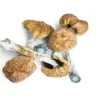
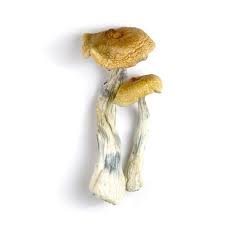
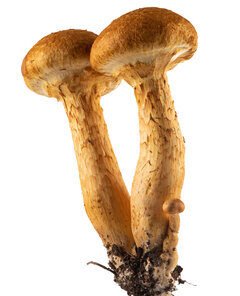

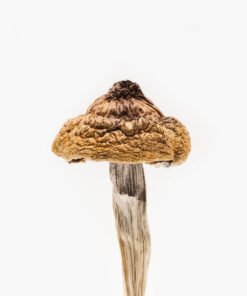
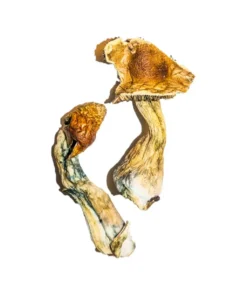
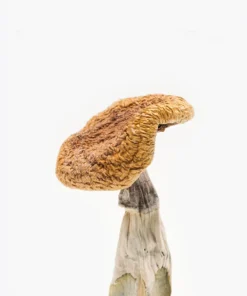
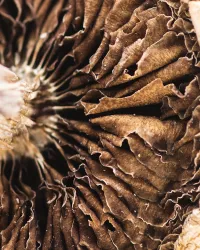


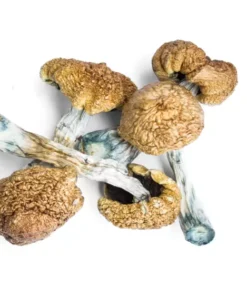
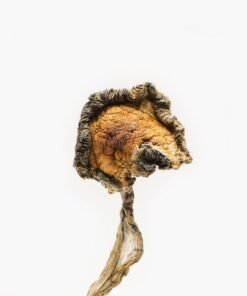


Reviews
There are no reviews yet.